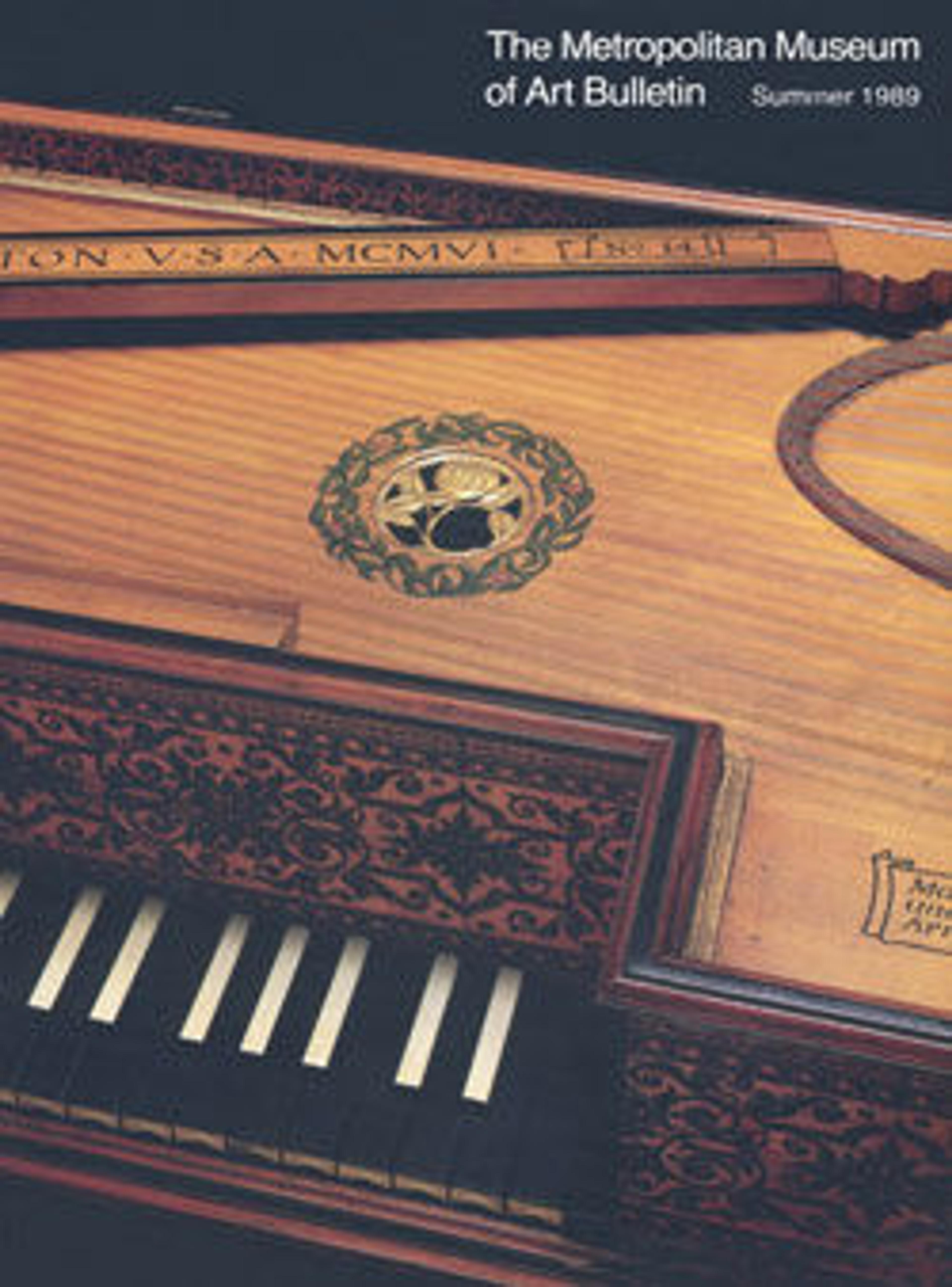Square Piano
Practically the smallest, simplest piano imaginable, this instrument was carried wherever its quiet music was wanted. The rectangular case and layout of the keys, strings, and soundboard derive from the clavichord. Unlike a clavichord’s fixed tangents which contact the strings while they sound, the piano's hinged hammers bounce away, letting the strings vibrate freely. The hammer's lever adds velocity to the blow, allowing a louder sound than the clavichord tangent's gentle tap. The specific type of action found in this instrument is a primitive version of the German prellmechanik and each hammer strikes a single string. This tiny piano lacks dampers, so every tone overlaps the next as in a harp or hammer dulcimer. The instrument case is made of cherry wood. The piano has 54 keys (C-f3), with walnut or stained boxwood naturals and lighter wood accidentals.
Artwork Details
- Title:Square Piano
- Date:ca. 1790
- Geography:Germany
- Culture:Possibly German
- Medium:Cherry wood, various materials
- Dimensions:Case L. perpendicular to keyboard: 23.7 cm (9-5/16 in.); W. parallel to keyboard: 95.8 cm (37-11/16 in.) Case D. without lid: 9.9 cm (3-7/8 in.)
- Classification:Chordophone-Zither-struck-piano
- Credit Line:Gift of Bernardus Boekelman, 1911
- Object Number:11.176.4
- Curatorial Department: Musical Instruments
More Artwork
Research Resources
The Met provides unparalleled resources for research and welcomes an international community of students and scholars. The Met's Open Access API is where creators and researchers can connect to the The Met collection. Open Access data and public domain images are available for unrestricted commercial and noncommercial use without permission or fee.
To request images under copyright and other restrictions, please use this Image Request form.
Feedback
We continue to research and examine historical and cultural context for objects in The Met collection. If you have comments or questions about this object record, please contact us using the form below. The Museum looks forward to receiving your comments.
